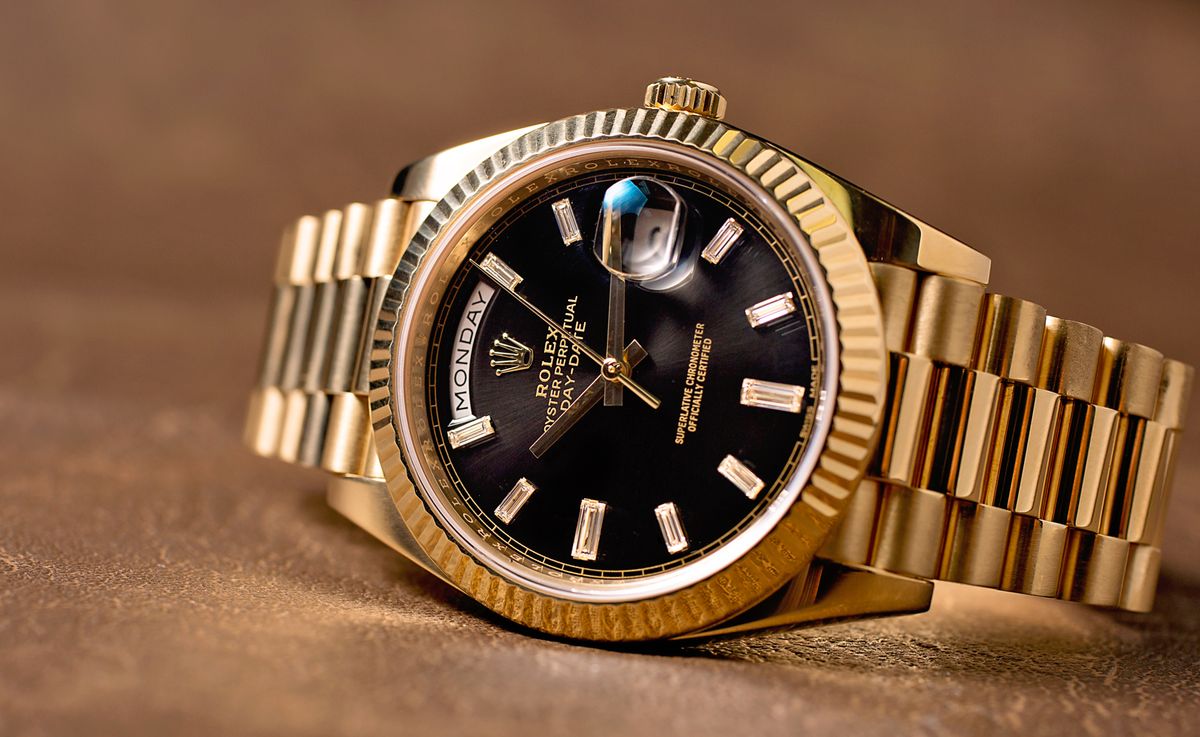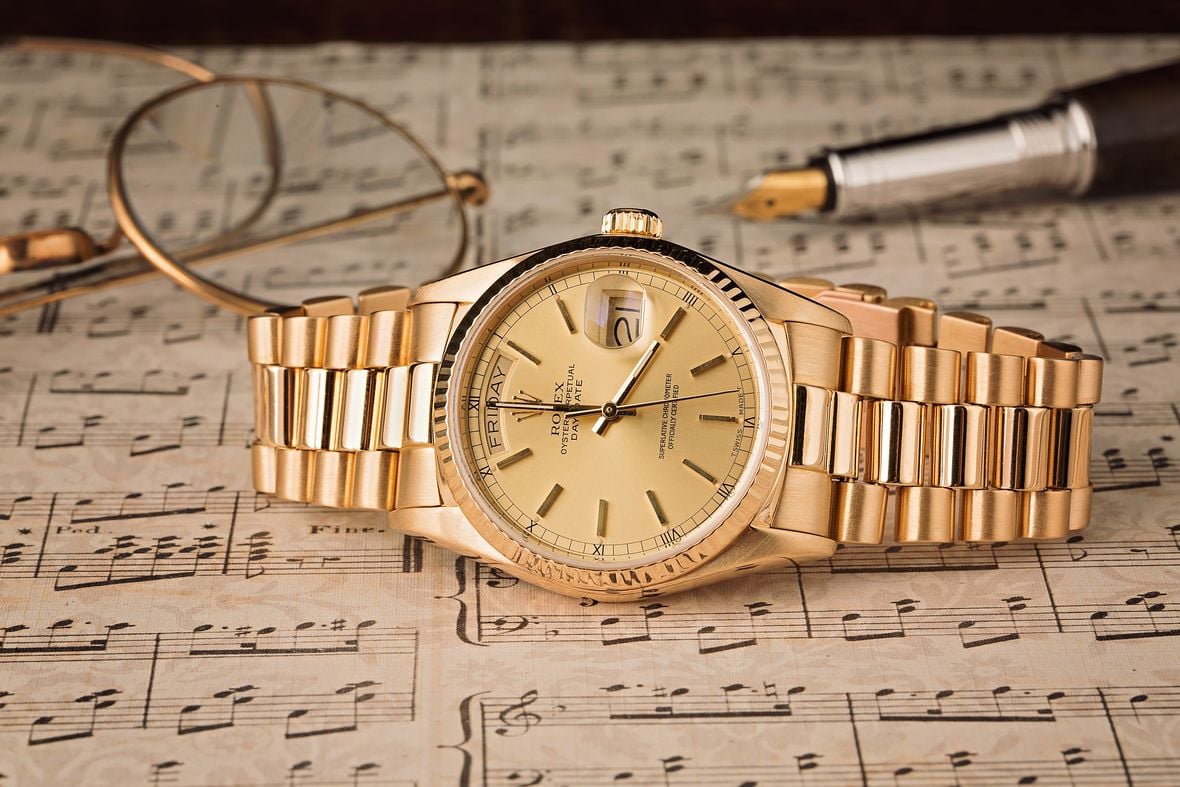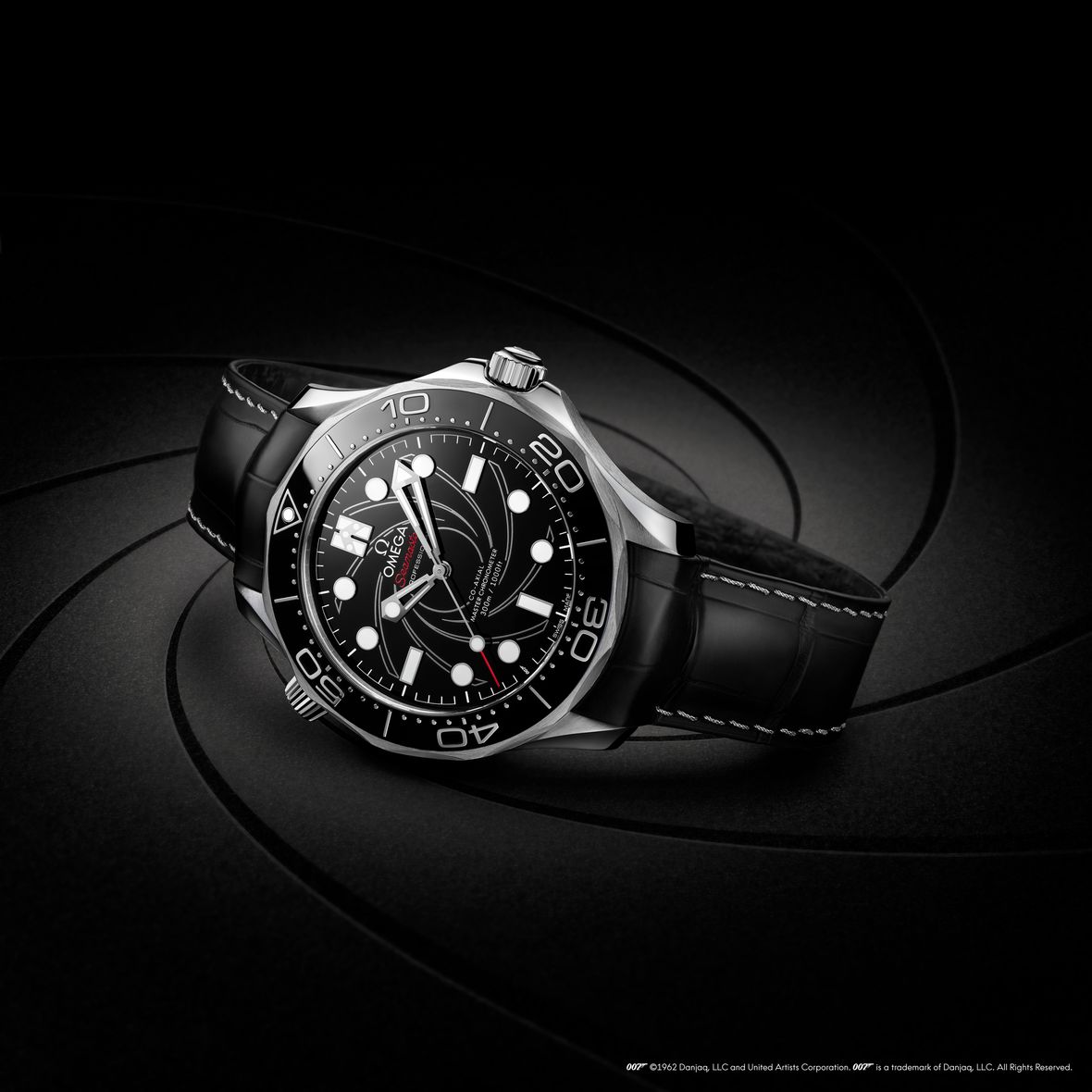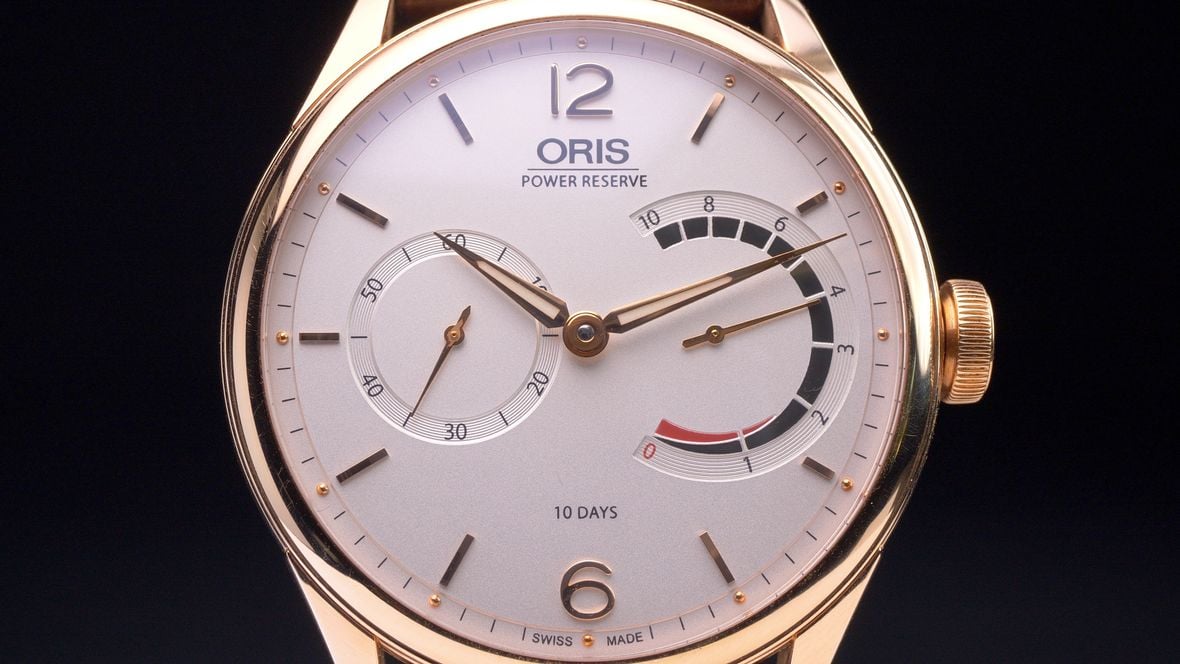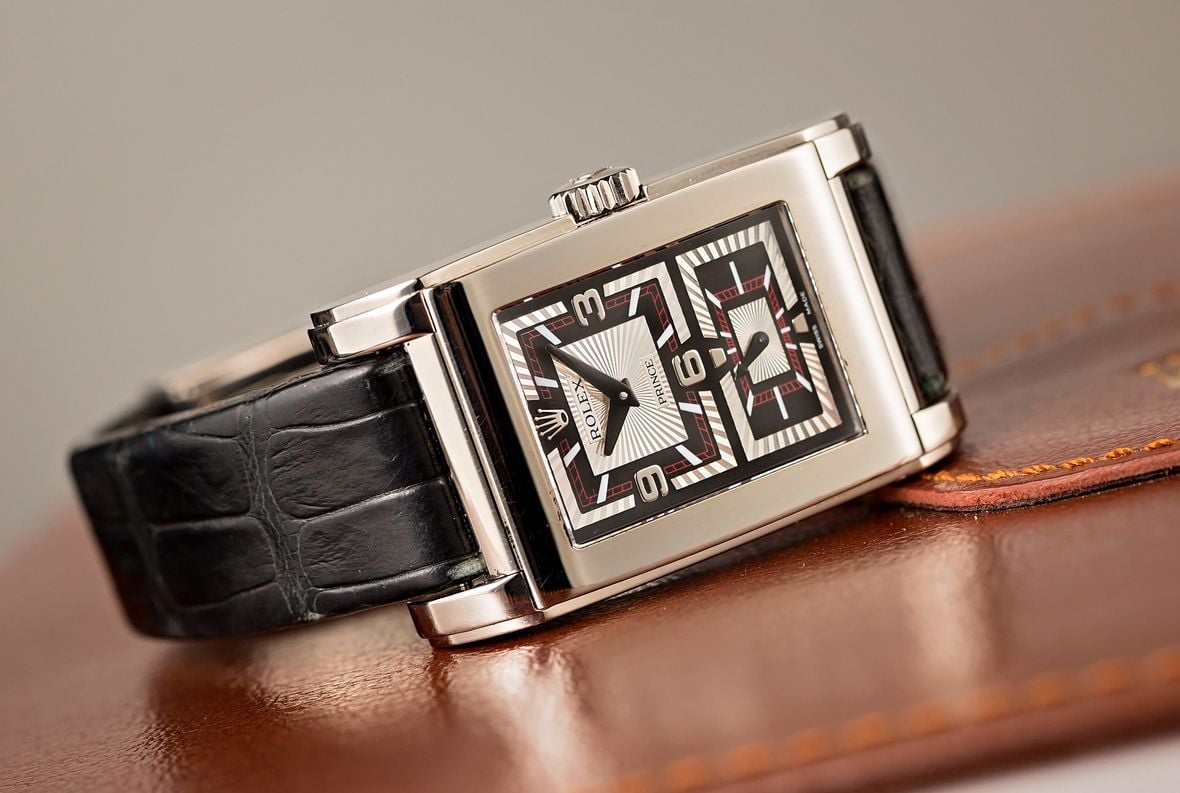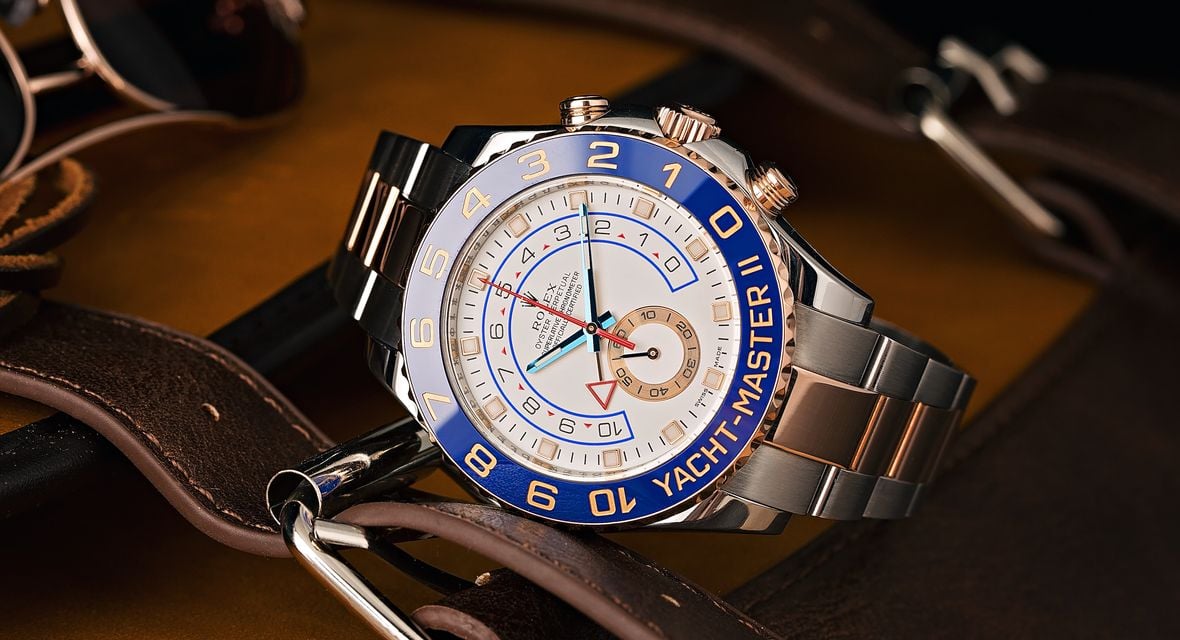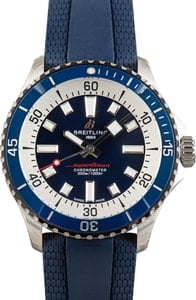The Rolex Day-Date – better known as the Rolex Presidential – is a watch that needs no introduction. It is easily one of the brand’s most recognizable timepieces with both day and date apertures on the dial and a signature three-link bracelet. From dignitaries to celebrities and even U.S. Presidents, many of the world’s elite choose this famed watch and it has become synonymous with success and power. Click here to shop the Rolex Day Date collection.
Today, the “President’s Watch” is desired by collectors from all walks of life. Thanks to an impressive production run that spans decades and includes a number of different references, owning one of these Rolex watches is easier than ever before. If you know what to look for, it’s possible to add this piece of Rolex history to your watch box at nearly any budget. While the collection has evolved considerably over the past several decades, its core design remains the same. This enduring power, coupled with an impressive reputation, makes the Rolex Day-Date President such a widely sought-after wristwatch among some of the world’s more respected figures.
Rolex Day-Date Collection
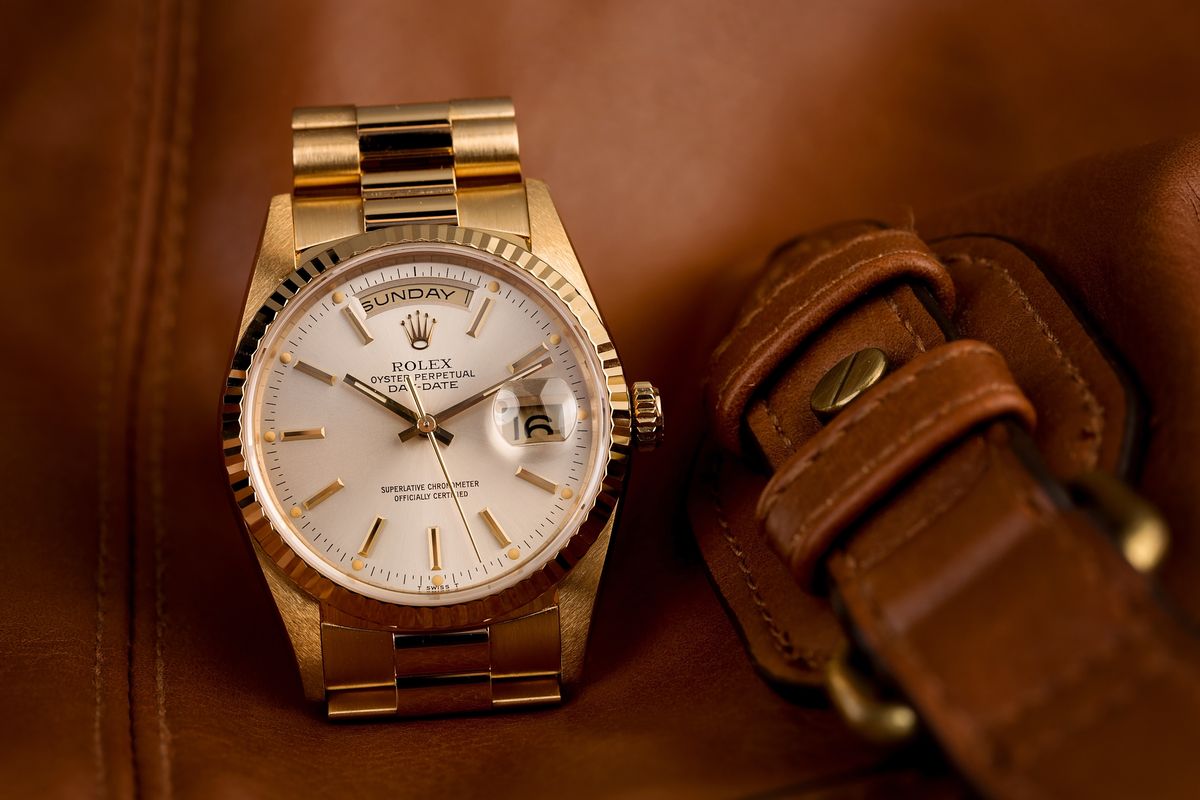
Key Features
Introduced: 1956
Case Diameter: 36mm; 40mm; 41mm
Materials: 18k gold (yellow, white, rose); 950 platinum
Functions: Time with running seconds, date of the month, day of the week.
Bezel: Fluted, smooth, textured, gem-set
Dial: Multiple options available
Bracelet: President; Oyster; leather strap
Water resistance: 100 meters / 330 feet
Click here to learn more about the complete history of the Rolex Day-Date.
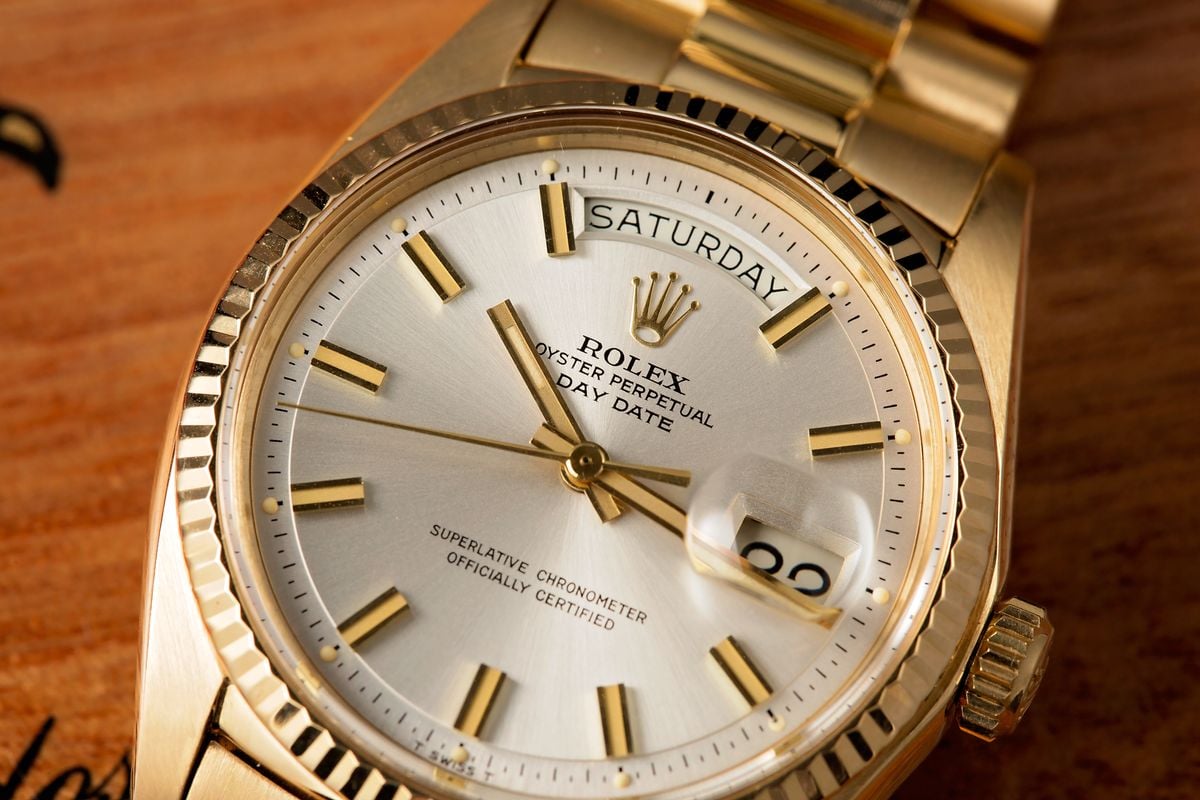
The History of the Rolex Day-Date
The Rolex Day-Date’s legacy began in 1956. The first references produced within the series were the 6510 and 6511, which featured the now-iconic President bracelet, a fluted bezel, and a 36mm Oyster case. These references were the first watches in the world to display both a date of the month and the day of the week, spelled out in full through windows in the dial. As a member of the Oyster Perpetual series, the 6510 and 6511 also sported Rolex’s patented waterproof Oyster case and self-winding Perpetual movement.
The first generation set the wheels in motion. It didn’t take long for the series to evolve to include a broader selection of dial colors, metal options, bezels, bracelet types, and movements. The rest of the Rolex Day-Date collection was introduced as follows:
1959: 180x Series – cal. 1555, later 1556
1977: 180xx Series – cal. 3055
1977: OysterQuartz Series – cal. 5055, later 5355
1988: 182xx Series – cal. 3155
2000: 118xxx Series – cal. 3155
2008: Day-Date II with 41mm case – cal. 3156
2015: Day-Date 40 – cal. 3255
2019: 1282xx Series – cal. 3255
The acrylic (plexiglass) crystal was discontinued in favor of the sleeker and more resilient sapphire crystal with the arrival of the 5-digit generation. Around the same time, the bracelet’s clasp was upgraded to the concealed Crownclasp, which still remains in production today, albeit in a new and updated form. Modern references also boast a refined bracelet with completely solid links, an improved clasp design, a slightly more robust case with thicker lugs, and a number of more colorful dial options.

Movement Evolution
The first Rolex Day-Date references 6510 and 6511 were powered by the cal. 1055, which required a bulkier case to house the new day disc and primitive self-winding mechanism within the movement. As is the case with nearly every wristwatch that Rolex produces, the movement and case design were tirelessly perfected to offer a sleeker and more effortless hold on the wrist. This movement was eventually replaced with the cal. 1555 in the 180x series of Day-Date watches
The next significant change to the movement came in the 1970s with the addition of hacking seconds in the cal. 1556 and a Single Quickset function in its successor cal. 3055. Hacking seconds allows the wearer to stop the seconds hand while setting the time, enabling synchronization and increased precision. The Single Quickset allows the wearer to adjust the date of the month independently from the time, by simply rotating the winding crown.
The Quartz Crisis also hit around this time – an era that saw a significant shift in trends from mechanical movements towards quartz-powered watches. To remain on-trend, Rolex developed a collection of quartz movement watches, including the Day-Date series, which was powered by the in-house cal. 5055, then later the cal. 5355. The Rolex OysterQuartz series remained in production until the very early 2000s but ultimately failed to catch on with the public.
The 182xx series hit the market in the late 1980s, bringing with it the cal. 3155 and the now-standard Double Quickset function. With a Double Quickset, the wearer can correct both the date and day displays without twisting the crown full 24-hour rotations. The cal. 3155 remained the Day-Date’s go-to movement for the next several decades.
The Rolex Day-Date II brought with it a larger 41mm case size and the cal. 3156 with a 48-hour power reserve. While the watch was certainly on-trend, it was eventually discontinued in favor of the current Day-Date 40 and the brand-new cal. 3255.
Today, the cal. 3255 powers both the Rolex Day-Date 40 and Day-Date 36. It boasts magnetic-resistant and anti-shock technology and it is heralded for its singularly precise reading. It also features a longer 70-hour power reserve and it is protected by a total of 14 patents.
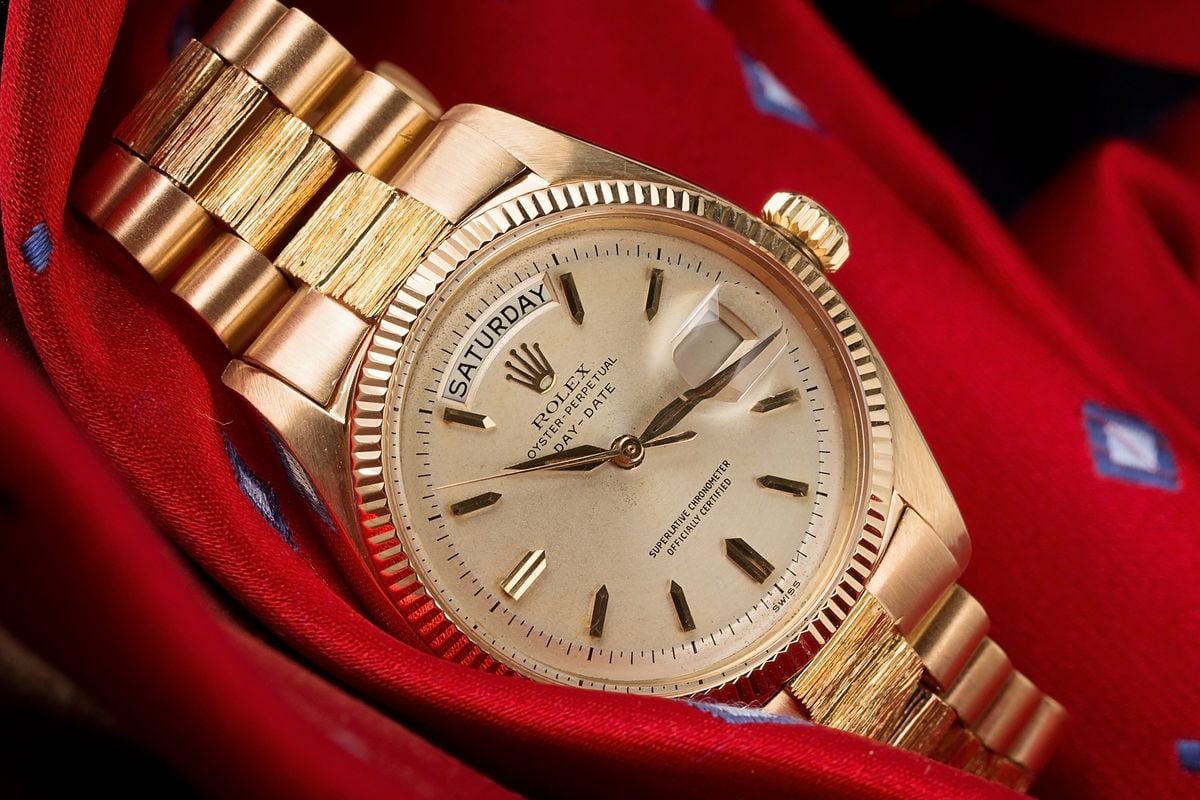
The Origin of the “President’s” Watch
With its exclusive use of precious metals, the Rolex Day-Date quickly became a status watch sought-after by some of the world’s most influential leaders and visionaries. It exudes power and success, so it seems only natural that the Day-Date would become the watch of choice among many American Presidents.
While the watch is formally named the Rolex Day-Date, it has also become known as the “Rolex President” or “Rolex Presidential” – a nickname that originated due to the 36th President of the United States, Lyndon B. Johnson famously wearing a yellow gold Rolex Day-Date while in office.
It’s often incorrectly stated that Dwight D. Eisenhower was the man behind the ‘Rolex President’ nickname as he was gifted a gold Rolex to celebrate the brand’s 150,000th chronometer. However, the watch was actually an 18k yellow gold Datejust, not a Day-Date. Eisenhower was famously photographed wearing his gold Rolex on the cover of TIME magazine. However, since this magazine shoot took place in 1952 and the Day-Date was not released until 1956, it is impossible for Eisenhower’s Rolex to be from the Day-Date collection.
JFK also reportedly owned a Rolex Day-Date, which was given to him by none other than Marylin Monroe. The story behind the actual watch – which was inscribed with “Jack with love as always from Marilyn May 29th, 1962” – still remains a mystery. Rumor has it JFK never kept the watch; however, it recently sold at 2005 auction for $120,000.
The Rolex Day-Date isn’t always Presidential
In general, the term “Rolex President” refers to any timepiece within the brand’s portfolio that wears on the iconic semi-circular link bracelet. Not every Rolex Day-Date watch is fitted with this bracelet type. For example, the Rolex Day-Date ref. 118205 in Everose takes on a sportier aesthetic with a smooth bezel and flat-link Oyster bracelet. Although recently discontinued, this option remains popular among modern collectors who seek a Rolex Day-Date watch with a more modern and unique appearance. Additionally, some Rolex Day-Date watches come from the factory fitted with leather straps and these models feature lug hoods for a more integrated appearance.
Another example that might surprise some is the Rolex Day-Date Pearlmaster in platinum ref. 18946, which includes both day and date apertures on the dial but wears on the brand’s ultra-luxurious Pearlmaster bracelet. Conversely, not every Rolex President is a Day-Date watch either. For example, the “Lady President” Datejust ref. 69178 is presented on the semi-circular link President bracelet, but the watch itself hails from the Datejust family and does not include a day mechanism on the dial, only the date.
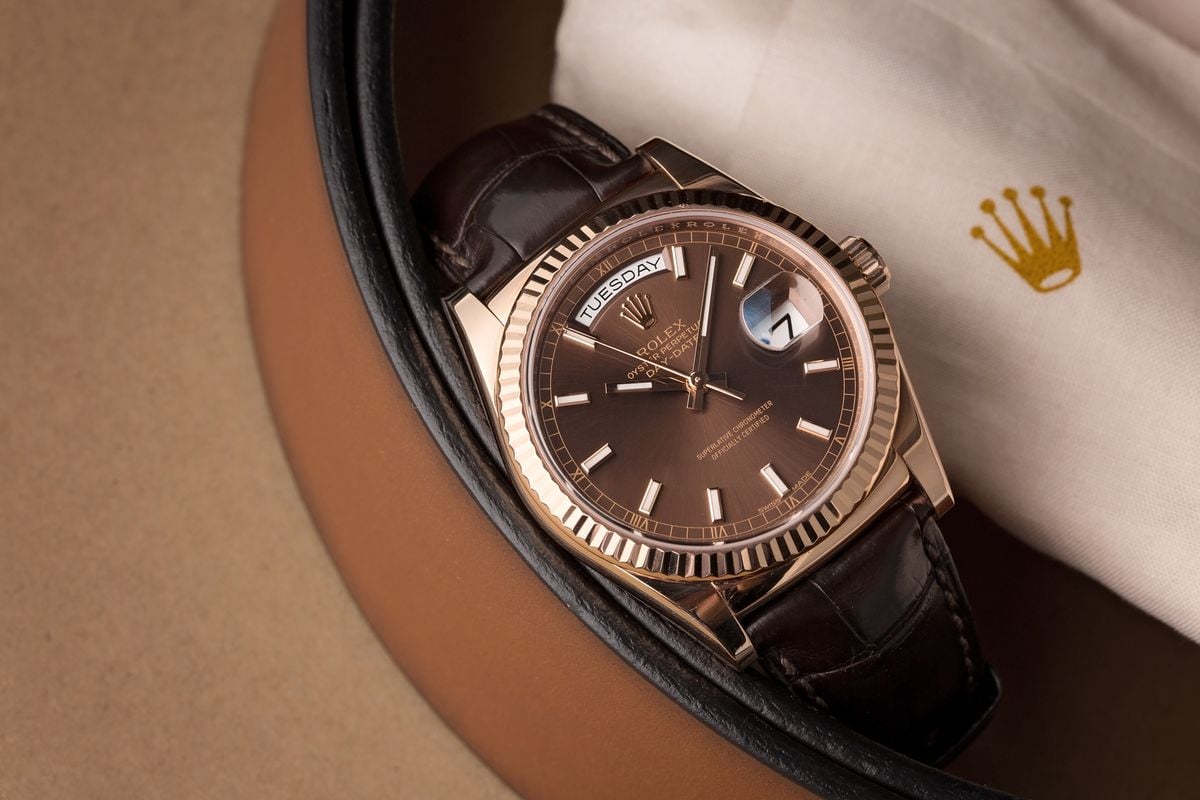
How Much is a Rolex Day-Date?
The beauty of the Rolex Day-Date is that it stands to hold its value better than any other watch in the Rolex catalog – assuming that you pick up one on the secondary market for a good price. The sole use of precious metals, combined with the series’ reputation for excellence and luxury, cement the Day-Date’s place as a serious investment.
While the Rolex Day-Date does command a higher price than other Rolex watches that offer steel or a combination of steel and gold (especially at retail), your money will certainly not go to waste. Beyond the value of it as a Rolex watch – which is certainly not something to overlook, your timepiece will always be worth a significant chunk of change due to the value of the solid gold or platinum that is used in its construction.
Backed by the promise of quality Rolex craftsmanship, any Day-Date will maintain a precise reading for decades, and these iconic luxury watches have all the makings of heirloom pieces to be enjoyed for generations. The Rolex Day-Date offers a price point for virtually every budget. While the sky is the limit when it comes to the price range for this celebrated luxury icon, the most affordable models can be found on the pre-owned market for around $5k and prices go all the way up to well-above $30,000.
Buying New vs. Pre-Owned
While it’s true that the Rolex Day-Date will hold its value long-term, there is a considerable advantage when purchasing used watches rather than new ones. Much like buying a brand-new car, most Day-Date watches will depreciate almost immediately. For example, the solid gold reference 128238 currently in production retails for $33,150 and is available for around $30k used.
This is not all that significant of a difference in price, largely because the ref. 128238 is still in production. However, older Day-Date models promise an even greater difference in value when compared to ref. 128238, such as its immediate predecessor ref. 118238, which sells for roughly half the price on the secondary market with prices hovering around $16k to $20k depending on the specific model and its configuration.
There is no denying the excitement of being the first to wear a brand-new Rolex watch. But there are benefits to purchasing a pre-owned model if you know where to shop. It’s also hard to deny the investment potential at nearly 50% savings compared to a brand-new Day-Date with a similar feature set. Pre-owned Rolex watches almost always stand to increase in value since the initial depreciation has already been absorbed by the original buyer. Why not give yourself an advantage by purchasing a Rolex for well below retail?
Pros and Cons of New vs. Pre-Owned Rolex Day-Date Watches
The immediate benefits of shopping for a new watch are that the model will boast the latest and greatest in Rolex technology. You also don’t have to worry about the wristwatch being counterfeit or damaged and it will come backed by Rolex’s full factory warranty. With that in mind, a trusted pre-owned dealer will always ensure that the Rolex is genuine, certified pre-owned, and ready to wear.
The biggest drawback to buying a pre-owned watch is that you have to do your research to make sure that you are buying from a trusted source. If you know where to shop, the pressure of ensuring the authenticity of the watch will fall on the dealer’s shoulders. Additionally, Rolex designs are timeless, and the brand’s movements are meant to last for generations. If you can resist the temptation of a brand-new watch, then the pros of shopping pre-owned should easily outweigh the cons.
What to Know before you Shop Pre-Owned
There are few things to consider before buying a pre-owned Rolex Day-Date:
1. Choose a Reputable Seller. This is easily the most important step in the purchasing process. eBay and Craigslist are some of the riskiest options; the old saying, “buy the seller” will always be true here.
2. Do Your Research: Do your homework on the specific watch that you intend to buy and become familiar with its feature set and average price. Understanding what creates the watch’s value will set you up for success before you even begin shopping.
3. Ask Questions. Does it come with original papers? Has it been serviced? Does it still have its original parts? These are just some of the questions that should be kept in mind.
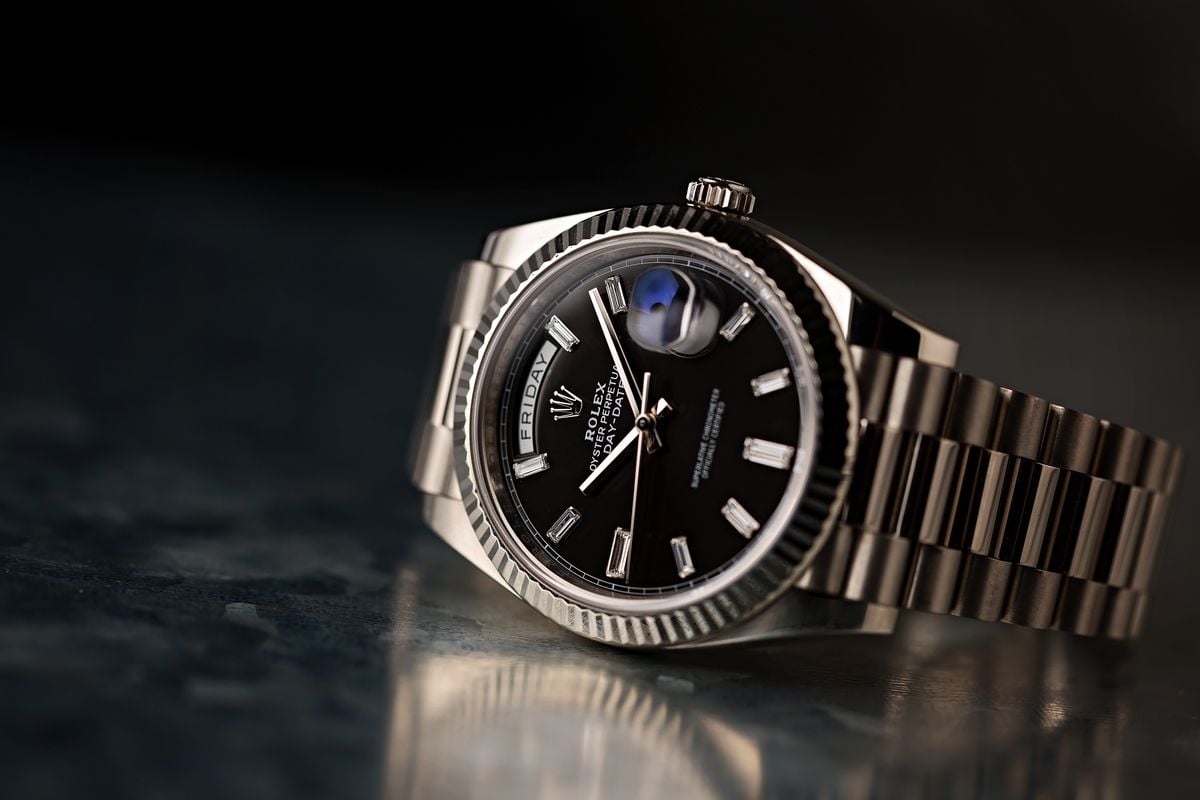
Rolex Day-Date features and Options
The Rolex Day-Date includes a countless selection of configurations, some of which are still in production today and many that have since been discontinued. Below is a brief overview of the several feature options that have been available within the Rolex Day-Date series.
Dial
The Rolex Day-Date earns its name from the dual apertures on the dial: the numerical date at 3 o’clock and the day (spelled out in full) at 12 o’clock. The day of the week is currently available in 26 languages. The design of the dial itself includes traditional stick indices, Arabic numerals, Roman numerals, and even diamond-set indexes. The dial is also available in countless color options, including green, champagne, white, silver, blue, and even exotic material dials that feature slices of semi-precious stones or rare materials like fossil or meteorite.
Case
The case of the Rolex Day-Date debuted in 36mm. While a 41mm Day-Date made a brief appearance in the form of the short-lived Day-Date II, the collection is currently only available in either 36mm or 40mm. Depending on the year of production, the Oyster case is waterproof up to 100 meters and is outfitted with either a smooth, fluted, textured, or diamond bezel. Newer models feature scratch-resistant sapphire crystals over the dial, while vintage editions sport ones crafted from acrylic. More recent generations also include Twinlock crowns, which screw into the Monobloc middle case to promise water-resistance up to 100 meters.
Bracelet
The President bracelet is the most iconic bracelet option available on the Rolex Day-Date series. It debuted alongside the inaugural Day-Date and remains a fixture of the collection today. Aside from some editions of the Midsize and Lady-Datejust, the President bracelet is reserved exclusively for the Day-Date collection. It is distinguished by a hidden Crownclasp and semi-circular, three-piece links, the center of which is usually polished.
While the President bracelet is a hallmark of the Rolex Day-Date collection, it is not the only bracelet option that has been available. As we already mentioned, some editions of the model have also been made available on Rolex’s iconic Oyster bracelet, and some models have also been fitted with leather straps. Many of the strap options are vibrant colors that match the dials and mirror the “Stella” Day-Date watches from the 1970s. The straps are secured with a single fold Oysterclasp in a metal that matches the case.
Metal Options
Precious metals currently available within the Rolex Day-Date catalog include 18k yellow gold, white gold, pink gold (aka Everose gold), and 950 platinum. Regardless of color, all gold is 18-carat and is produced by Rolex’s in-house foundry. Today, the Rolex Day-Date is only available in either solid gold or platinum; however, there are a few very rare vintage stainless steel editions that are known to exist from the early years of the collection’s history.
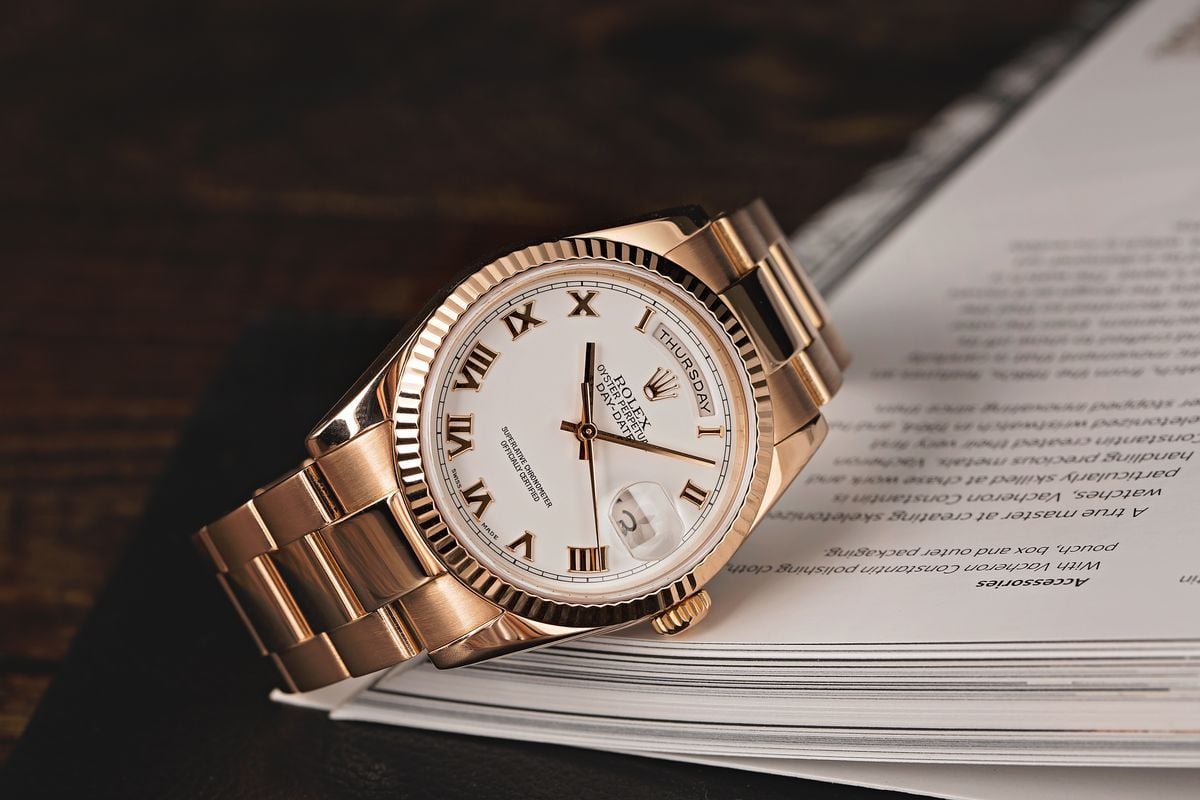
Rolex Day-Date Watches by Price
Rolex Day-Date – $5,000 to $10,000
For the sake of this guide, we will review options for the collection in three different price tiers. Prices for the Rolex Day-Date can start as low as $5k, depending on the watch’s feature set and condition. This might come as a surprise to some, considering the immense reputation of the watch and the exclusive use of precious metals. Quality is not lost on the older options, and their design is much like the watches that are currently being released by the brand.
1803:
If you’re in the market for an introductory gold Rolex, vintage references are a great place to start. The 4-digit series beginning with the 180x are readily available on the market with varying designs and configurations. One of the most prevalent on the secondary market is the yellow gold Rolex Day-Date 1803, produced from the 1960s until around the late 1970s.
With a traditional President bracelet, fluted bezel, and 36mm case, it is instantly recognizable. It makes a powerful impact without overtaking the wrist (or holding your wallet hostage). Additionally, the ref. 1803 features a variety of metal finishes and dial colors, presented in the retro “Pie Pan” style that is celebrated by vintage collectors.
18038:
Next on our list is the reference 18038. This edition of the Rolex Day-Date is one generation newer than the previous ref. 1803. It includes a cal. 3055 self-winding movement that beats at a higher frequency of 28,800bph. It also boasts a convenient Single Quickset function. The watch is remarkably similar in design to the ref. 1803 with a fluted bezel, President bracelet, and 36mm Oyster case – however, this version features a flat dial (rather than Pie Pan) and a scratch-resistant sapphire crystal. This edition of the Rolex Day-Date is also available with the prized hidden Crownclasp, which is virtually indistinguishable from the bracelet’s links except for a small crown tab on the very bottom.
18078:
For around $10k, you can add a unique bark-textured Day-Date to your watch box. Aside from the center links and bezel, the ref. 18078 looks just like any other Rolex President watch. The case is 36mm in diameter and houses a self-winding movement with both a day and date mechanism. Additionally, the watch wears on a President bracelet with semi-circular links. What sets it apart is the bark-textured finish on the bezel and center links (other textures have also been offered but are less common). This treatment adds dimension and character to watch and is a cult favorite among many vintage enthusiasts.
19018:
The OysterQuartz series is another unique edition of the Rolex Day-Date available for under $10k. Developed during the Swiss Quartz Crisis in the 1970s, the watch includes a quartz movement and unique case and integrated bracelet design. While the case itself measures 36mm in diameter, it now features more angular lugs and a matching angular. This design set oozes 1970s charm and will appeal to anyone who appreciates retro luxury watch design.
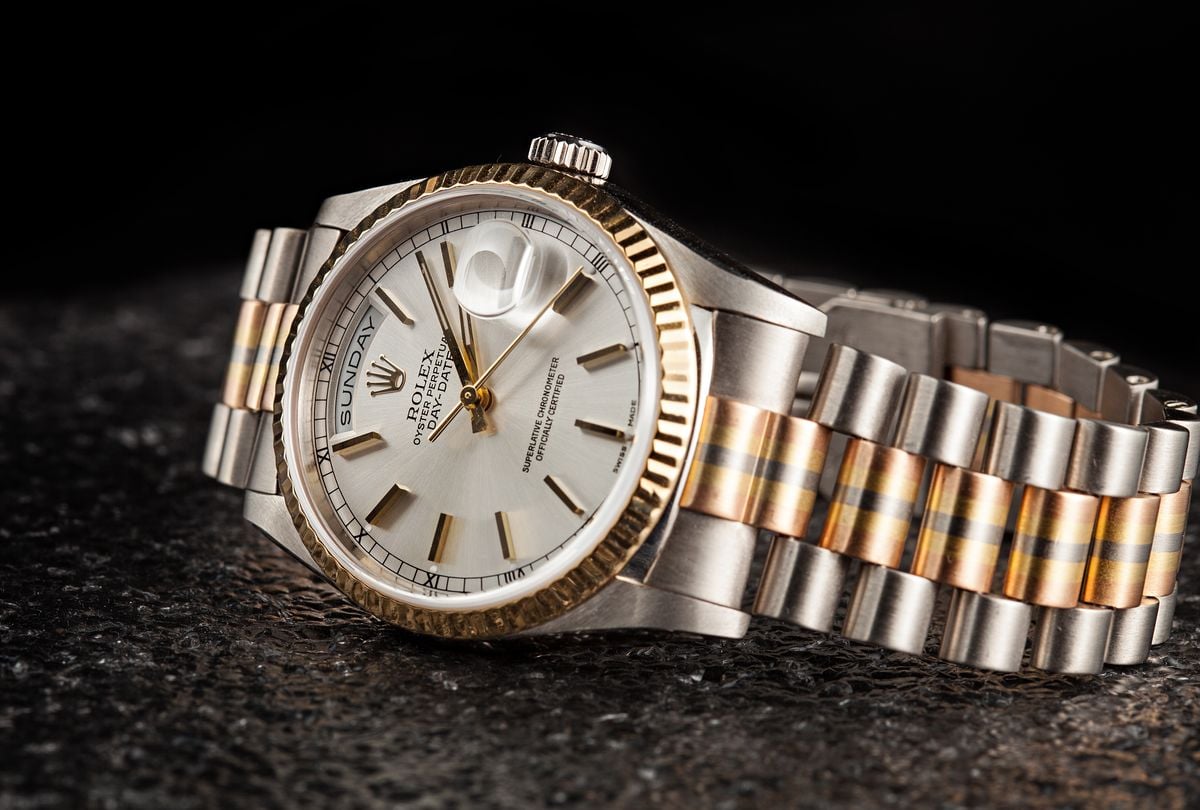
Rolex Day-Date Watches – $10,000 to $20,000
Modern Rolex Day-Date watches make their appearance around the $10,000 price range and beyond, including the 182xx series with the Double Quickset cal. 3155 and some of the discontinued 6-digit references. If you’re searching for a modern Day-Date, this tier is an excellent starting point offering modern-day convenience at a significantly more affordable price.
18238:
The ref. 18238 was the first Rolex Day-Date to offer a Double Quickset function. It also includes a scratch-resistant sapphire crystal and largely resembles the previous ref. 18038 but with an improved movement. Most frequently presented in gold, it is similar in design to the previously mentioned 1803 and 18038. If you’re in the market for a gold Rolex watch that brings a little more functionality to the table, the Day-Date 18238 might be perfect for your wrist.
18239:
Also within the 5-digit series is the rare Tridor Day-Date ref. 18239. As you might have already guessed from its name, it comprises of three different shades of 18k gold: white, yellow, and rose. The three metals are combined on the center links, creating a unique design that is unlike any other Rolex watch. The rest of the watch stays true to traditional President styling with semi-circular links and a 36mm case.
118239:
If yellow gold isn’t quite your style, the ref. 118239 in 18-carat white gold might catch your eye. It provides the luxury of solid gold while offering the versatility of a white metal finish. As a 6-digit reference, the ref. 118239 also features an upgraded bracelet and clasp. The result is a Rolex Day-Date that feels noticeably more substantial on the wrist when compared to its 5-digit predecessors. For around $15k, you can add one to your watch box
118209:
Also available in white gold is the Rolex Day-Date 118209 on an Oyster bracelet. The flat links and smooth bezel lend themselves to a sportier overall aesthetic. Popular dial pairings include contemporary Rhodium adorned with either Roman numerals or diamonds. You can own one pre-owned for around $15k, which represents an excellent bargain for a solid 18k white gold Rolex watch.
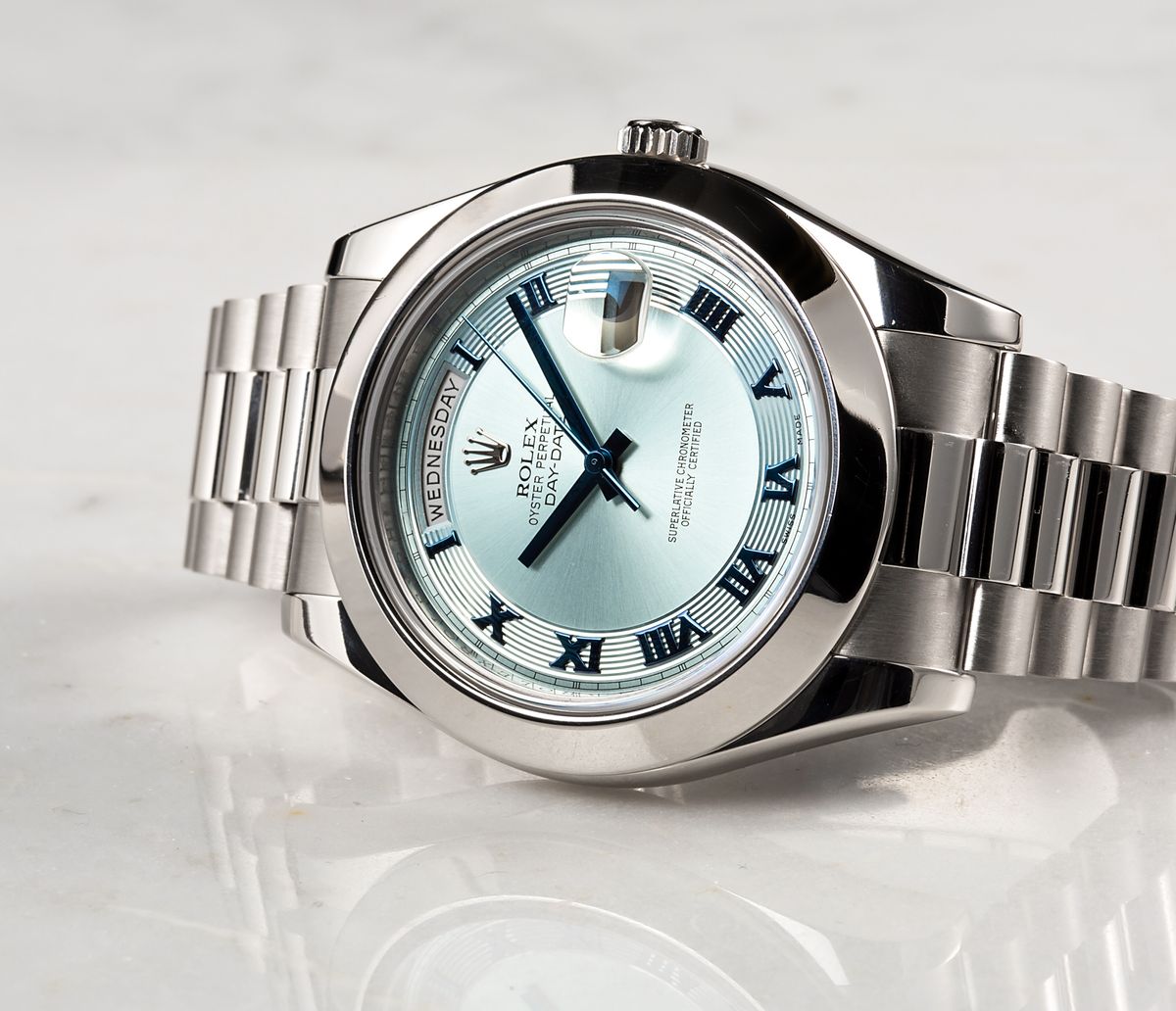
Rolex Day-Date Watches – $30,000 and Beyond
For over $30k, options within the Rolex Day-Date collection are endless. The selection includes brand-new references dripping with diamonds to watches with larger case sizes and exquisite 950 platinum. The Rolex Day-Date’s newest movement cal. 3255 is also available at this price range.
Day-Date 36:
The current 36mm Day-Date is a cornerstone of the Rolex brand. It represents decades of tireless refinement and expert engineering and the watch is nearly flawless. Although, we’re sure Rolex will find ways to improve its design in the future as watchmaking technologies continue to advance. Within the collection are numerous contemporary dial options, bezel types, and metal finishes. Current references include yellow gold (ref. 128238), white gold (ref. 128239), and rose gold (ref. 128235). The 1282xx collection is powered by the celebrated cal. 3255 movement.
Day-Date II:
For decades, the 36mm version was the only case option within the Rolex Day-Date series. That all changed in 2008 when the Day-Date II was released. It featured a 41mm case size and a then-new cal. 3156 movement. While on-trend, there was certainly room for improvement, and the Rolex Day-Date II was discontinued. During its production, the watch was available in yellow gold (ref. 218238), pink gold (ref. 218235), white gold (ref. 218239), and platinum (ref. 218206). Collectors who seek a sportier take on the luxurious Day-Date often choose the discontinued Day-Date II, as it is the largest of all Rolex Day-Date watches.
Day-Date 40:
The Rolex Day-Date 40 replaced the Day-Date II in 2015. While only 1mm smaller than its predecessor, there is a substantial difference between the two models when on the wrist. The Day-Date 40 is much more refined with sleeker lugs and an overall less chunky design. The perfect balance of contemporary and elegant styling, it appears as though the Rolex Day-Date 40 is here to stay. The collection is available in every precious metal available to the brand, including 18k yellow gold (ref. 228238), white gold (ref. 228239), pink gold (ref. 228235), and icy 950 platinum (ref. 228206).
Choosing the Perfect Day-Date for your Wrist
With irresistible investment potential, envious design, and unparalleled accuracy, it isn’t likely that the Rolex Day-Date is going anywhere anytime soon. For more than half a century, the Day-Date collection has been Rolex’s flagship line of timepieces, and it represents a safe bet if you’re in the market for a luxury watch in which to invest your hard-earned money.
The Rolex Day-Date is available in a seemingly infinite selection of variations and configurations. Choosing the perfect reference ultimately comes down to personal taste and budget, but there really are no wrong choices when selecting a model from this timeless collection of luxury watches.
